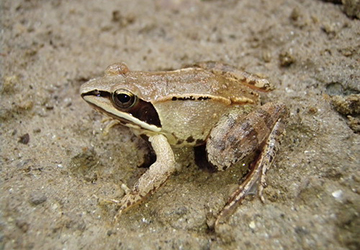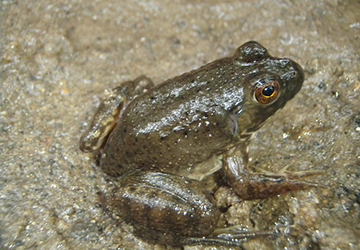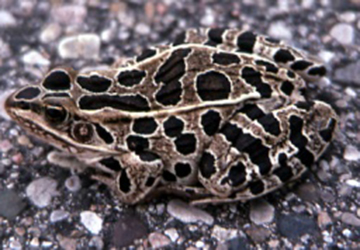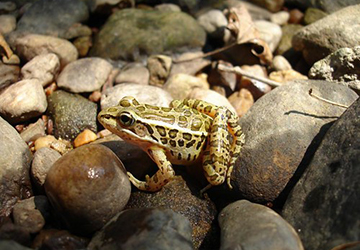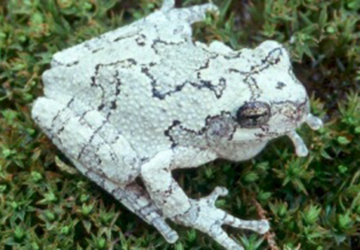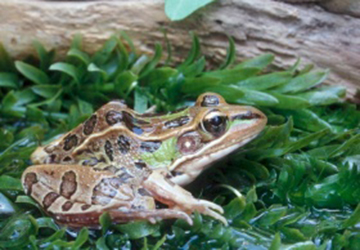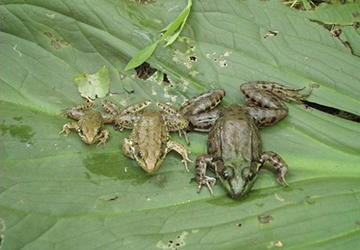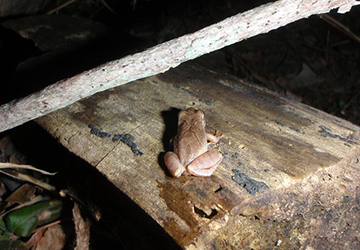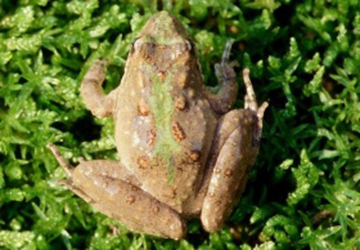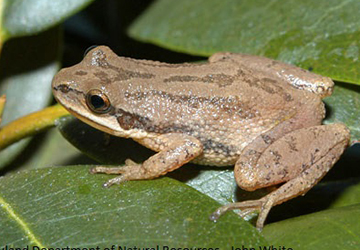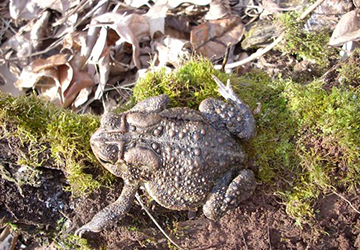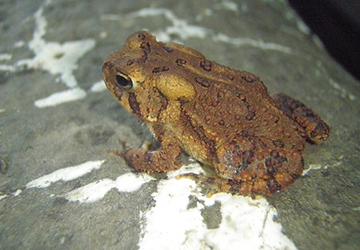Frogs and Toads
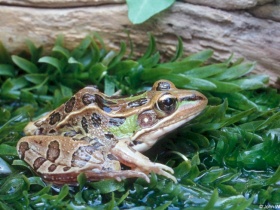
Frogs and toads are most easily found and heard in early spring when the weather first starts to warm up. As soon as the snow melts and the first rains come down, amphibians emerge and trek to small, temporary pools, known as seasonal, or vernal pools. They also can be found in stormwater wet ponds and other wetlands.
In early spring, especially at dusk, the air near good frog habitat fills with the choruses of "love songs" from male frogs advertising their availability for mating. Their mating calls are a sure sign of spring! Frogs are particularly active during rainy periods and at night.
There are 14 species of frogs and toads that can occur in Montgomery County. Check out the list below for the common frog and toad species of the County and their individual calls.
DEP recognizes the importance of amphibians as indicators of water quality and includes them in the County's biological monitoring program to:
Frog Species
Toad Species
Habitat - Seasonal Pools
Seasonal pools are sensitive areas that provide critical habitat for invertebrates, amphibians, reptiles, birds, and mammals.
Importance of Wetlands
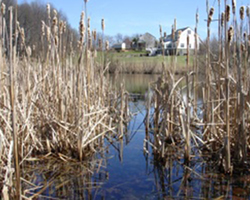
These small, productive wetlands are critical for maintaining many species and often show problems with water quality before streams, rivers, and even drinking water. The quality of these wetlands is directly related to what we do on the land.
Vernal Pools
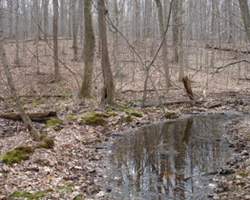
Amphibians spend at least part of their lives in water such as flowing streams, seasonal pools, or other wetland types. Vernal pools are often the only place amphibians can lay their eggs. When we change the landscape these vernal pools can often dry up.
Eggs Masses
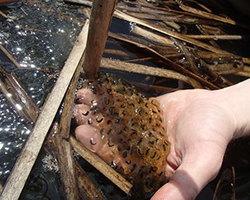
About the size of a softball, some amphibian Eggs like the wood frog eggs shown here are laid communally in masses, lack a hard outer covering making them very sensitive to pollution. The clucking of wood frogs can be heard before even arriving at the water's edge.
Wood Frog tadpoles in action ( video link)
Learn More
Maryland Amphibian and Reptile Atlas
The Maryland Amphibian and Reptile Atlas or MARA, documents the distribution of all species of reptiles and amphibians across Maryland. It is a joint effort but the Maryland Department of Natural Resources and the Natural History Society of Maryland. It helps to support future research, conservation and protection efforts.
Be a Frog Watch Volunteer
Find out how you can volunteer to be a citizen scientist to watch and report trends of amphibian populations. Contact Montgomery County Parks to participate or learn how to SAVE THE FROGS.
Watch video >>
Dream of the Toad
“The mating call of the American toad is a long musical trill with a magical dreamlike quality” – Henry David Thoreau. Watch this video to hear this musical masterpiece.
Watch video >>
More on DEP monitoring
Along with monitoring stream bugs and fish, studying amphibians can paint a broader picture of local water quality and pollution impacts.
